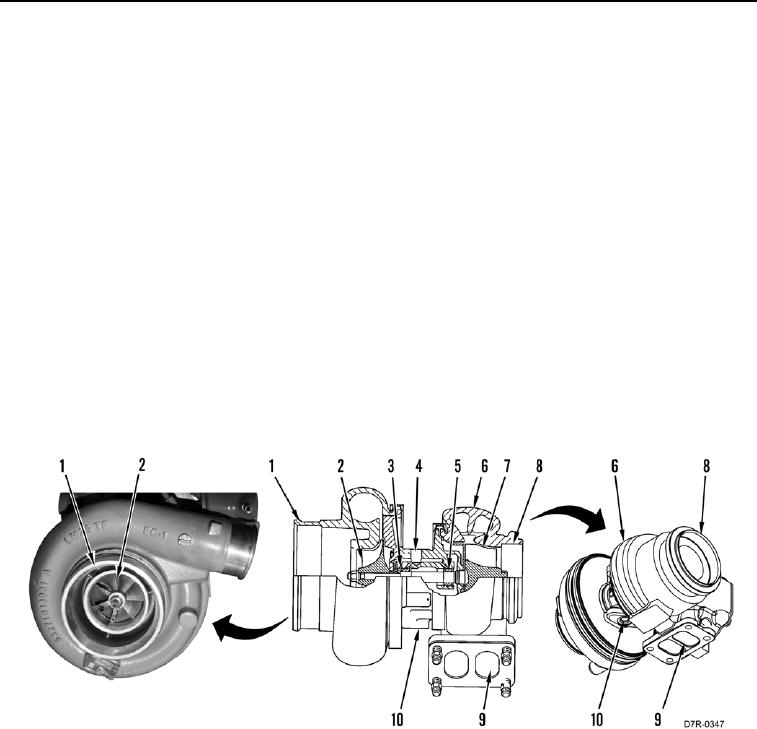
TM 5-2410-241-23-1
0005
AIR INLET AND EXHAUST SYSTEM CONTINUED
Turbocharger
0005
The turbocharger is installed on the center section of the exhaust manifold. All the exhaust gases from the engine
go through the turbocharger. The compressor side of the turbocharger is connected to the aftercooler by a pipe.
The exhaust gases enter turbine housing (Figure 2, Item 6) through exhaust inlet (Figure 2, Item 9). The exhaust
gases then push the blades of turbine wheel (Figure 2, Item 7) and exit the exhaust outlet (Figure 2, Item 8). The
turbine wheel is connected by a shaft to compressor wheel (Figure 2, Item 2).
Clean air from the air cleaner is pulled through the compressor housing air inlet (Figure 2, Item 1) by the rotation of
compressor wheel (Figure 2, Item 2). The action of the compressor wheel blades causes a compression of the inlet
air. This compression gives the engine more power by allowing the engine to burn more air and more fuel during
When the load on the engine increases, more fuel is injected into the cylinders. The combustion of this additional
fuel produces more exhaust gases. The additional exhaust gases cause the turbine and the compressor wheels of
the turbocharger to turn faster. As the compressor wheel turns faster, more air is forced into the cylinders. The
increased flow of air gives the engine more power by allowing the engine to burn the additional fuel with greater
efficiency.
Bearings (Figure 2, Items 3 and 5) for the turbocharger use engine oil under pressure for lubrication. The oil comes
in through the oil inlet port (Figure 2, Item 4). The oil then goes through passages in the center section in order to
lubricate the bearings. Oil from the turbocharger goes out through the oil outlet port (Figure 2, Item 10) in the
bottom of the center section. The oil then goes back to the engine lubrication system.
Figure 2. Turbocharger.
0005

